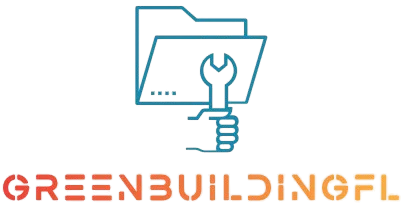Techniques for Effective Project Communication
Effective communication is a cornerstone of successful project management. Clear and concise communication helps ensure all stakeholders are aligned, reduces misunderstandings, and keeps the project on track. Here are some key techniques for improving communication in project management.

Define Clear Objectives and Expectations
At the start of any project, it’s essential to establish clear objectives, roles, and responsibilities. This ensures that everyone knows what is expected and reduces confusion later.
How to Implement
- Create a project charter or plan outlining the goals, milestones, and deliverables.
- Clearly define each team member’s role.
- Set communication expectations, such as how frequently updates should be shared and through which channels.
Use the Right Communication Channels
Choosing the right platform or medium for communication is crucial. Not every message should be delivered via email, and some updates are better suited for in-person or video meetings.
How to Implement
- Use project management software (e.g., Trello, Asana, or Slack) for day-to-day updates.
- Schedule regular team meetings for discussions requiring real-time feedback.
- Reserve emails for formal communications, like approvals and important updates.
Sustainable Building Solutions in Florida
GreenBuildingFL.com promotes eco-friendly building practices and sustainable solutions for Florida’s construction industry. For a different type of engaging online entertainment, discover online pokies australia. Experience the thrill of online reel spinning.
Hold Regular Stand-up Meetings
Daily or weekly stand-up meetings help keep the team informed of each other’s progress and quickly address any roadblocks. These meetings are short and to the point, ensuring team members stay updated.
Sustainable Building Solutions in Florida
GreenBuildingFL.com promotes eco-friendly building practices and sustainable solutions for Florida’s construction industry. For a different type of engaging online entertainment, discover online pokies australia. Experience the thrill of online reel spinning.
How to Implement
- Keep stand-up meetings brief (10–15 minutes).
- Have each team member report on what they did yesterday, what they’ll do today, and any issues they face.
- Ensure everyone is involved, even remote team members, via video conferencing.
Create Detailed Status Reports
Regular status reports help stakeholders and team members track progress and understand where the project stands in relation to its goals.
How to Implement
- Send out weekly or bi-weekly status reports summarizing project progress, completed tasks, upcoming milestones, and potential risks.
- Use visual aids like Gantt charts or dashboards to present complex information clearly.
- Highlight any issues or changes that may affect the project timeline or budget.
Jackpotjillvip Casino Login
At GreenBuildingFL.com, we are dedicated to promoting sustainable construction practices across Florida, offering resources and guidance for both professionals and homeowners. Our platform provides information on energy-efficient building techniques, eco-friendly materials, and the latest green building certifications. We aim to support the transition towards environmentally responsible and resilient construction in the Sunshine State. For those interested in online entertainment, platforms like Jackpotjillvip Casino Login offer a variety of gaming experiences, emphasizing the importance of secure and enjoyable digital environments.
Active Listening
Good communication is a two-way street. Listening is just as important as delivering information. Active listening helps project managers understand the concerns and suggestions of their team members, leading to better problem-solving and collaboration.
How to Implement
- Encourage feedback and questions during meetings.
- Make an effort to understand and clarify any points of confusion.
- Show empathy when addressing concerns, making sure team members feel heard and valued.
Use Visual Communication Tools
Some concepts are better communicated through visuals rather than text. Diagrams, charts, and project timelines can help clarify complex ideas and make information easier to understand.
How to Implement
- Use flowcharts to depict project workflows.
- Implement Gantt charts to show the project schedule.
- Use mind maps or brainstorming tools to communicate ideas or strategies visually.
Tailor Communication to Your Audience
Different stakeholders require different levels of detail. Adjust your message based on who you are communicating with to ensure that the right level of information is shared.
How to Implement
- For team members, provide detailed technical updates.
- For executives or clients, focus on high-level progress, milestones, and risks.
- Use less technical language for non-expert stakeholders.
Foster Open and Transparent Communication
Transparency is essential for building trust and keeping everyone aligned. Encourage team members to be open about any issues or delays they’re facing.
How to Implement
- Create a culture where team members feel comfortable raising concerns without fear of blame.
- Use a central repository or communication platform where all team members can access relevant project documents and updates.
Use Feedback Loops
Feedback loops help to continuously improve project processes and communication methods. They provide an opportunity to learn from past mistakes and make adjustments.
How to Implement
- After each major milestone, hold a team retrospective to discuss what worked and what didn’t.
- Implement actionable changes based on feedback.
Manage Conflict Effectively
Conflicts are inevitable in projects. However, managing them constructively can prevent them from escalating and impacting the project.
How to Implement
- Address conflicts early before they escalate.
- Encourage open communication to resolve misunderstandings.
- Act as a mediator and focus on finding win-win solutions.
Enjoy Trusted Online Casino Games
Explore Essayez Casino La Riviera France, le site de casino en ligne for a reliable and fun online gaming experience. Platforms offer fairness, safety, and a variety of entertaining slots. Players can enjoy responsible gaming while discovering new games. This ensures fun and secure online gameplay.
Conclusion
Effective communication is vital to the success of any project. By defining clear objectives, using the right communication tools, listening actively, and fostering transparency, you can ensure your project stays on track and that your team remains engaged. Implementing these techniques will improve collaboration, reduce miscommunication, and ultimately lead to more successful project outcomes.



